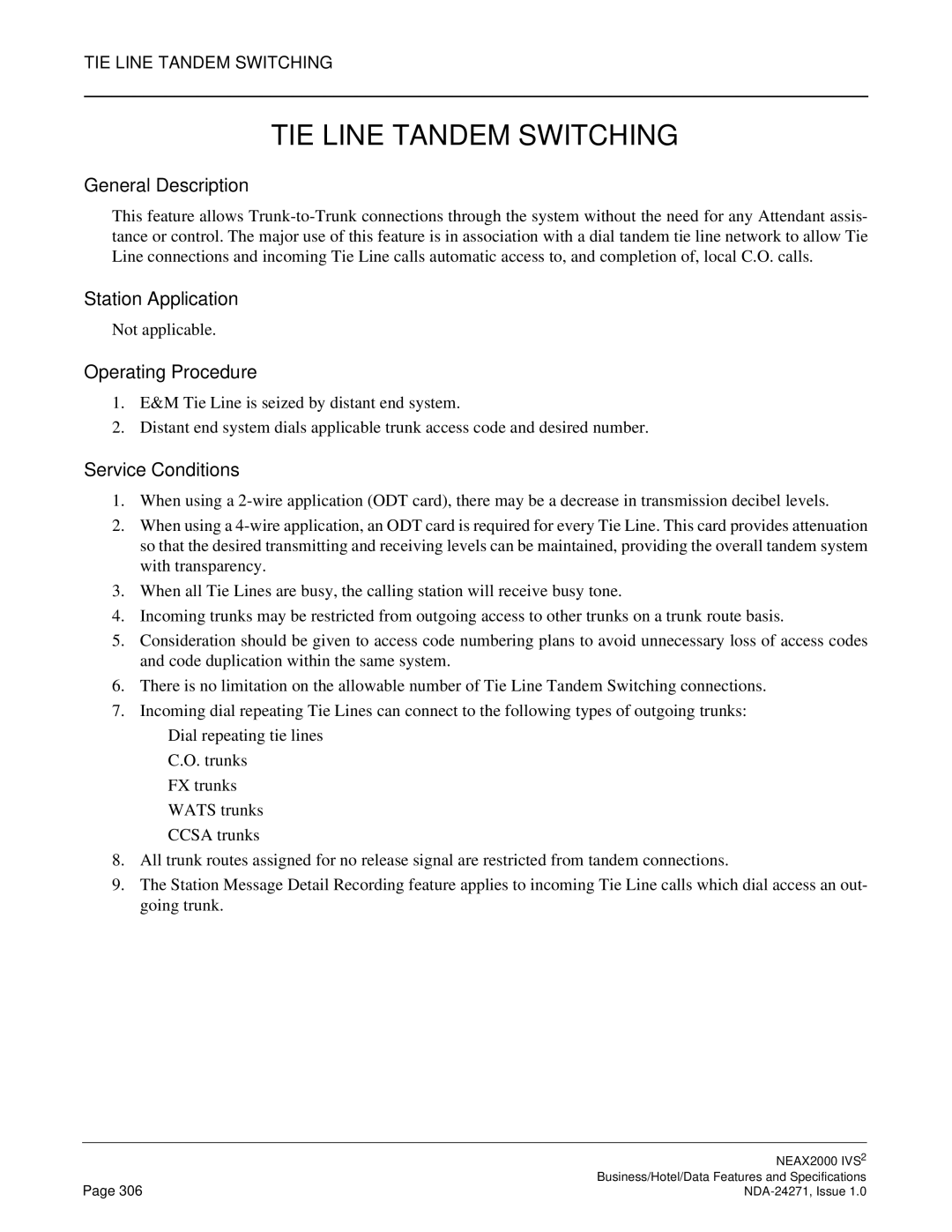
TIE LINE TANDEM SWITCHING
TIE LINE TANDEM SWITCHING
General Description
This feature allows
Station Application
Not applicable.
Operating Procedure
1.E&M Tie Line is seized by distant end system.
2.Distant end system dials applicable trunk access code and desired number.
Service Conditions
1.When using a
2.When using a
3.When all Tie Lines are busy, the calling station will receive busy tone.
4.Incoming trunks may be restricted from outgoing access to other trunks on a trunk route basis.
5.Consideration should be given to access code numbering plans to avoid unnecessary loss of access codes and code duplication within the same system.
6.There is no limitation on the allowable number of Tie Line Tandem Switching connections.
7.Incoming dial repeating Tie Lines can connect to the following types of outgoing trunks:
•Dial repeating tie lines
•C.O. trunks
•FX trunks
•WATS trunks
•CCSA trunks
8.All trunk routes assigned for no release signal are restricted from tandem connections.
9.The Station Message Detail Recording feature applies to incoming Tie Line calls which dial access an out- going trunk.
| NEAX2000 IVS2 |
Page 306 | Business/Hotel/Data Features and Specifications |
